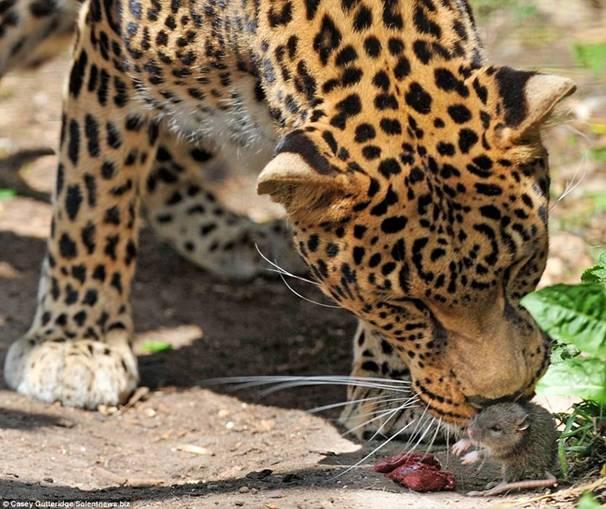| Why are some of us caring and some of us cruel, some generous and some greedy? Paul J. Zak on the new science of morality— and how it could be used to create a more virtuous society. | THE TRUST MOLECULE
By Paul J. Zak, WSJ, 27 April 2012.
Why are some people trustworthy, while others lie, cheat and steal? Part of the answer may reside in a hormone called oxytocin. Claremont Graduate University's Paul Zak talks with WSJ's Gary Rosen about how a "vampire wedding" helped him understand how this chemical works to control trust, empathy and virtue.
Could a single molecule—one chemical substance—lie at the very center of our moral lives?
Research that I have done over the past decade suggests that a chemical messenger called oxytocin accounts for why some people give freely of themselves and others are coldhearted louts, why some people cheat and steal and others you can trust with your life, why some husbands are more faithful than others, and why women tend to be nicer and more generous than men. In our blood and in the brain, oxytocin appears to be the chemical elixir that creates bonds of trust not just in our intimate relationships but also in our business dealings, in politics and in society at large.
Known primarily as a female reproductive hormone, oxytocin controls contractions during labor, which is where many women encounter it as Pitocin, the synthetic version that doctors inject in expectant mothers to induce delivery. Oxytocin is also responsible for the calm, focused attention that mothers lavish on their babies while breast-feeding. And it is abundant, too, on wedding nights (we hope) because it helps to create the warm glow that both women and men feel during sex, a massage or even a hug.
Since 2001, my colleagues and I have conducted a number of experiments showing that when someone's level of oxytocin goes up, he or she responds more generously and caringly, even with complete strangers. As a benchmark for measuring behavior, we relied on the willingness of our subjects to share real money with others in real time. To measure the increase in oxytocin, we took their blood and analyzed it. Money comes in conveniently measurable units, which meant that we were able to quantify the increase in generosity by the amount someone was willing to share. We were then able to correlate these numbers with the increase in oxytocin found in the blood.
Later, to be certain that what we were seeing was true cause and effect, we sprayed synthetic oxytocin into our subjects' nasal passages—a way to get it directly into their brains. Our conclusion: We could turn the behavioral response on and off like a garden hose. (Don't try this at home: Oxytocin inhalers aren't available to consumers in the U.S.)
More strikingly, we found that you don't need to shoot a chemical up someone's nose, or have sex with them, or even give them a hug in order to create the surge in oxytocin that leads to more generous behavior. To trigger this "moral molecule," all you have to do is give someone a sign of trust. When one person extends himself to another in a trusting way—by, say, giving money—the person being trusted experiences a surge in oxytocin that makes her less likely to hold back and less likely to cheat. Which is another way of saying that the feeling of being trusted makes a person more…trustworthy. Which, over time, makes other people more inclined to trust, which in turn…
If you detect the makings of an endless loop that can feed back onto itself, creating what might be called a virtuous circle—and ultimately a more virtuous society—you are getting the idea.
Obviously, there is more to it, because no one chemical in the body functions in isolation, and other factors from a person's life experience play a role as well. Things can go awry. In our studies, we found that a small percentage of subjects never shared any money; analysis of their blood indicated that their oxytocin receptors were malfunctioning. But for everyone else, oxytocin orchestrates the kind of generous and caring behavior that every culture endorses as the right way to live—the cooperative, benign, pro-social way of living that every culture on the planet describes as "moral." The Golden Rule is a lesson that the body already knows, and when we get it right, we feel the rewards immediately.
This isn't to say that oxytocin always makes us good or generous or trusting. In our rough-and-tumble world, an unwavering response of openness and loving kindness would be like going around with a "kick me" sign on your back. Instead, the moral molecule works like a gyroscope, helping us to maintain our balance between behavior based on trust and behavior based on wariness and distrust. In this way oxytocin helps us to navigate between the social benefits of openness—which are considerable—and the reasonable caution that we need to avoid being taken for a ride.
Consider a real-life experiment that I conducted with a bride named Linda Geddes. A writer for the British magazine New Scientist, Linda had been following my research and thought it would be fun to see if the emotional uplift of her wedding would alter the guests' levels of oxytocin.
I arrived at the venue, a Victorian manor house in the English countryside, with a 150-pound centrifuge and 70 pounds of dry ice. I unpacked my equipment—syringes, 156 prelabeled test tubes, tourniquets, alcohol preps, Band-Aids—and got to work. The plan that I'd worked out with Linda was to take two samples from a cross section of the friends and family in attendance—one draw of blood immediately before the vows and one immediately after.
After all the blood had been drawn, I slipped out with my test tubes nestled in their cushion of dry ice. It took two weeks for the samples to arrive at my California lab via FedEx, but the results showed just what we were hoping for: a simple snapshot of oxytocin's ability to read and reflect the nuances of a social situation.
The changes in individual oxytocin levels at Linda's ceremony could be mapped out like the solar system, with the bride as the sun. Between the first and second draws of blood, which were only an hour apart, Linda's own level shot up by 28%. For the other people tested, the increase in oxytocin was in direct proportion to the likely intensity of their emotional engagement in the event. The mother of the bride? Up 24%. The father of the groom? Up 19%. The groom himself? Up 13%…and on down the line.
But why, you may ask, would the groom's increase be less than his father's? Testosterone is one of several other hormones that can interfere with the release of oxytocin, and the groom's testosterone level, according to our blood test, had surged 100%! As the guests admired Linda in her strapless bridal gown, he was the alpha male.
Our study at the wedding had demonstrated just the kind of graded and contingent sensitivity that allows oxytocin to guide us between trust and wariness, generosity and self-protection. Should I feel safe and warm and cuddly in this crowd, or do I have to be on guard? Or maybe it is a situation in which the best outcome results from oxytocin dominating in one person and testosterone driving the other.
It is the sensitivity of oxytocin in its interaction with a range of other chemical messengers that helps to account for why human behavior is so infinitely complex—and why the bliss of the wedding day (and night) is often hard to maintain. (Consider the old joke about the guy who couldn't understand why his wife was unhappy. "I told you that I loved you when I asked you to marry me," he said. "I don't see why I need to tell you again.")
But there is a larger payoff from this research: After centuries of speculation about human nature and how we decide what is the right thing to do, we at last have some news we can use—empirical evidence that illuminates the mechanism at the heart of our moral guidance system. So what can we do to shift behavior a bit more toward the expression of oxytocin and thus improve the workings of our entire society?
The experiments I have conducted show that many group activities—singing, dancing, praying—cause the release of oxytocin and promote connection and caring. As social creatures, we have created activities that prompt the expression of oxytocin in order to foster connection to others. In fact, those who release the most oxytocin when they are trusted are happier and healthier because they have richer social lives.
Even the sort of "social snacking" that happens through Twitter or checking out a friend's Facebook page can prompt an oxytocin surge. But the real criterion for success is whether these online activities complement more substantial personal connections. Does this form of communication foster human bonds or does it foster anonymity and abstraction to the point of cutting off empathy?
Another approach to tune oxytocin release is to seek exposure to people outside our own families or cultural and geographic "tribes." There are solid evolutionary reasons why our species developed the tendency to be wary of those whose physical appearances or behavioral patterns are different from our own. For millions of years an individual's social world was limited almost entirely to her village and tribe, and outsiders were, for good reason, considered a threat until proven otherwise. Yet research has shown that this suspicion is malleable, and it fades with exposure.
With worries on the rise about the country's cultural and political divisions, some bottom-up boosts of oxytocin, based on face-to-face interaction, could help. It might take the form of a domestic student-exchange program, allowing kids from the big cities and small-town, rural kids to get to know one another. The revitalization of urban life, with its varied and crosscutting relationships, is a step in the right direction, too. One city going in the opposite direction is Washington, D.C., where fraternizing across party lines—once the norm—is nearly unheard of these days. Acrimony on Capitol Hill reflects, in part, these oxytocin-starved relationships.
A few years ago, I began warning visitors to my lab that before they left, I was going to give them a hug. This scares some people, but I've found that my slightly eccentric announcement changes the depth of the conversation, making it more intimate, more engaging and more valuable to us both. I suspect that by forecasting a hug, I'm also signaling how much I trust the person, so I'm inducing a release of oxytocin in their brains. Those people, in turn, will connect better to others and treat them more generously. Nothing grander is required for a virtuous circle to begin.
—From "The Moral Molecule" by Paul J. Zak, to be published May 10 by Dutton, a member of Penguin Group (USA).
|





 RSS Feed
RSS Feed